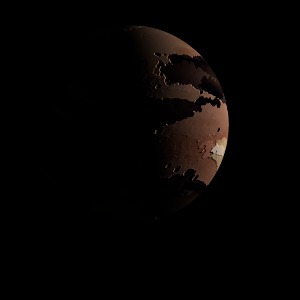|
|
Space Astro
|
Info for exoplanet "Praxkin Nomia"
| Scientific (actual) data |
|---|
| Name | Kepler-68 c |
| Planet status | Confirmed |
| Planet mass | 0.00642 |
| Radius | 0.0827 |
| Orbital period | 9.6051 |
| Semi major axis | 0.09059 |
| Orbit eccentricity | 0 |
| Inclination | 86.93 |
| Discovered | 2013 |
| Updated | 2025-04-01 |
| Omega | 0 |
| Tconj | 2455710 |
| Tzero tr | 2454970 |
| Impact parameter | 0.77 |
| K | 0.59 |
| Publication | Published in a refereed paper |
| Detection type | Primary Transit |
| Alternate names | KOI-246 c, KOI-246.02, WISE J192407.75+490224.8 c, TOI-1290 c, K00246.02, KIC 11295426 c, TYC 3551-189-1 c, 2MASS J19240775+4902249 c |
| Star name | Kepler-68 |
| Right ascension | 291.03° |
| Declination | 49.04° |
| Mag j | 8.975 |
| Mag h | 8.662 |
| Star distance | 144.166 |
| Star metallicity | 0.126 |
| Star mass | 1.064 |
| Star radius | 1.259 |
| Star sp type | G2IV-V |
| Star age | 6.84 |
| Star temperature | 5793 |
| Star alternate names | WISE J192407.75+490224.8, KOI-246, KIC 11295426, TOI-1290, BD+48 2893, 2MASS J19240775+4902249 |
| Wikipedia article | Kepler-68 c |
Back
| |
| Fictional info (?) |
|---|
| Suggested name | Praxkin Nomia |
| Planet type | Warm planet |
| It is a warm planet planet with a mass one-thousandth that of Kepler-68, but two-and-a-half times that of all the other planets in its solar system combined. |
| Atmosphere | Ammonia | 64% |
| Hydrogen peroxide | 32% |
| Molecular hydrogen | 3% |
| Argon | 0.85% |
| Xenon | 0.053% |
| Nitric oxide | 0.013% |
| Hydrogen | 1.3E-5% |
| Atmospheric pressure | 0.0025 bar |
 |
| Moon | Iakalia'the | Small almost round ice asteroid |
| Thea | Huge round crater-filled comet |
| Desdarosa Deimone | Very small irregular rocky comet |
| Atanarloge-fer | Huge round rocky moon |
| Tealade Hydelia | Huge round rocky comet |
| Creshali | Very small slightly egg-shaped rocky moon |
| Nusjot Deuces | Small round rocky moon |
| Remerir Stomir | Medium-sized almost round crater-filled moon |
| Julthys'onesaxa | Medium-sized potato shaped gaseous moon |
| Meturtur Per | Medium-sized irregular oceanic asteroid |
| Fenton | Medium-sized round gaseous planetoid |
| Saxacal'ja | Huge slightly egg-shaped rocky comet |
| Gadora Iji | Medium-sized round rocky asteroid |
| Lasmis | Very small irregular crater-filled moon |
| Thyrion Mathe | Huge potato shaped ice moon |
| Apusda Dra | Huge round oceanic asteroid |
| Dilelyp-pid | Medium-sized irregular rocky moon |
| Sirax Todes | Large slightly egg-shaped crater-filled asteroid |
| Gete | Large irregular ice comet |
| Rascar Nomia | Very small slightly egg-shaped ice moon |
| Bearalyp Nix | Small round rocky asteroid |
| Sete | Large irregular oceanic comet |
| Vostar-noe | Large round ice moon |
| Skaeuan | Huge irregular crater-filled planetoid |
| Epimede | Large round rocky moon |
| Chalme Pina | Large round gaseous asteroid |
| Biantan-far | Medium-sized round rocky moon |
| Lenemip Pinatar | Medium-sized potato shaped rocky moon |
| Eurythe | Huge slightly egg-shaped oceanic moon |
| Prax-thi | Very small round rocky moon |
| Google search for Praxkin nomia |
|
Website by Joachim Michaelis
|
|
|
|